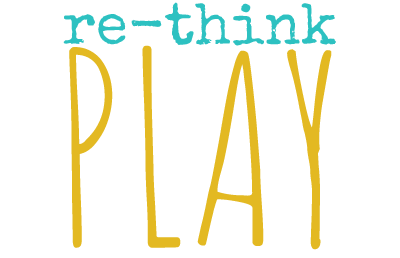The world can be an alarming place. Difficult things happen that are out of our control. And yet, it is not about the trauma itself–what happens or doesn’t happen to us or around us– but what happens inside of us as a result. And about who is, or isn’t, present with us in our pain.
This is the message of the recently released documentary, The Wisdom of Trauma. In this movie, Dr. Gabor Maté (co-author of Hold On To Your Kids) speaks with depth and clarity, provocatively suggesting (as the title implies) that there is inherent wisdom in trauma.
Our body’s wisdom can take care of us by disconnecting from that which is too painful to bear. However, we are not meant to stay in this disconnected state. As Gabor Maté says in the introduction to the film, “We have to work our way back to feeling, when we are ready.” I’m going to piggyback on that and suggest an additional route we may not have considered: we can play our way back to full feeling as well.
But first we should explore the question: why would we want to feel in the first place if it hurts too much? This is a good question; one that I often asked myself in the many years that I avoided sadness at all costs. Simply put, the reason we need to feel is that not feeling leads to all kinds of physical manifestations and emotional complications. Gabor Maté taught me that many years ago when I read his book, When the Body Says No (2003). It seems so obvious to me now, but I remember at the time it felt like a revolutionary thought: our bodies take on whatever emotions we can’t allow ourselves to feel. Our disconnect translates into illness, addiction, anxiety, and more.
We need to see each other, our humanity, but it’s hard to see when we’re disconnected. Feeling and seeing go hand-in-hand, because feeling is the feedback, the signal of what’s happening inside. But we don’t get those signals if our brain decides it’s not safe. Our innate defence system sends messages of its own that start inhibiting any feelings that would be too much to bear. We no longer “see” what’s happening inside. This can help us function in difficult circumstances and is often necessary due to the unbearable nature of the pain. But it is meant to be a short-term measure.
Several years back, Gabor shared with me some research he was doing on babies born during the time of 9/11. Myself, I had gone into labour early on the morning of September 11, 2001. When I saw the news of the terrorist attacks, my alarm kicked into full gear, and I decided I couldn’t give birth to a child that day. How could I when the world seemed turned upside down? What kind of a world would I be bringing my child into? I walked the streets in a daze. I was numb and disconnected. I didn’t feel anything. Three days later my daughter came into the world, hyperventilating at any hint of separation and with heightened sensory challenges. I believe my alarm at the time shaped her early experiences. So did Gabor.
You may be wondering at this point what play has to do with all of this? How can we even talk about trauma and play together? The seeming frivolity of play has no place in the seriousness of trauma. Stay with me here …
When we have been operating out of a place of disconnect for too long — deeply alarmed and frustrated with all that isn’t working in our lives, but too defended to sense it — it’s harder to find our way back to feeling. We need some help.
Enter play.
Play gives us a way through. It slips past our defences and says: We can do this. I am with you. You are not alone. Play can make it possible to touch on those feelings that seem impossible to bear in “the real world.”.
Play needs the freedom to go wherever it needs to go. It is not about the outcome, or the product, but the process we engage in. It is not about meeting someone’s expectations, even our own … the art may not always be pretty, the musical notes may not always be on key, but that’s okay. More than okay, actually. That is the point.
In the play mode there is room for all of YOU – messy emotions and all. Like being wrapped in the arms of someone who loves us or nestled in the warm fur of our favourite pet, play, too, provides a safe womb that allows us to touch the places – the fears, the frustrations, the futilities – that feel unbearable to touch directly.
What does this kind of play look like? That depends.
For me, it has looked like making time for my mind and body to wander in nature; going to imaginary places in my mind; playing with words and images; reading stories; spinning alpaca fibre and playing with coloured wool; playing music – haunting cello melodies, melancholy Blue Rodeo, edgy rap or angsty Twenty One Pilots (depending on my inner state); creating fairy villages (complete with miniature snails); cutting up magazines and putting images and words back together in a way that represents what is happening inside. The thing with play is: we don’t have to know what’s inside when we start; that’s the point. Through play we magically connect with what is already there in us. We give it expression, a way to come out.
For you, or for your child, this may look different:
• Perhaps the frustration comes out through a playful pillow fight, sword fight, or nerf gun battle. When it comes out through play like this, the relationship is preserved in that all of the difficult feelings that may come out in the play don’t threaten to hurt the connection between parent and child.
• Perhaps when we feel the emotional energy starting to build (and potentially spill out in inappropriate ways), we can turn it into a spontaneous dance party. The movement can provide a channel for what needs to come out, which can actually bring us closer to the more vulnerable feelings underneath.
• Perhaps it is through reading a book or watching a movie that allows space for the tears to come – through laughter or sadness. Witnessing someone else’s story allows an opportunity to gently touch on our own in ways that may seem surprising to us.
The thing is, we never really know what will become a portal for us until we find ourselves being moved in it. One of my favourite quotes is from Richard Wagamese (Keeper ’n Me, 1994): “ … something in the music sorta bumped up against something in my soul and made it move”. A mystery, yes … but a beautiful and transforming one.
Through the music, the movement, the story, we are carried and we are held. Our pain is given a voice. We tap into the healing system that lives in all of us. Through the wisdom of play, those stuck places of disconnection start to find movement, and connections start to be made.
“Underneath that traumatized person there’s a healthy individual who has never found expression in his life.” (The Wisdom of Trauma)
As Gabor’s wife, Rae Maté, said so poignantly in one of the interviews during the film release: “There’s no way out but through.” She talked about art in her own healing journey and how it wasn’t about knowing what she felt and then creating art out of it, it was about being present with whatever was there and letting it come out on to the canvas. Rae described how once it came to the surface, she could look back at it and see into herself, like a mirror reflecting her inner world. That’s the wisdom of play.
Play has been deeply misunderstood and undervalued. We have not taken care of the gift that nature has given us in play. And many of us are afraid of it. I know I was for many years, ever since I became conscious that there was a “right” way to do things. There was no room for exploration or mistakes, only the right answer mattered. I had lost my play, and my self, somewhere along the way. The good news is, play found me again. A little later than I would have liked, but it found me nonetheless. I started to find my way back to myself. I started to feel again.
We need to rethink play*. Because play — the kind that facilitates a connection with our inner world and allows for expression and movement — has the potential to actually heal our wounds and bring us back to our humanity. We need it. We’ve always needed it. And we need it now more than ever.
My wish for you, dear reader, is for you to somehow find a way to carve out space for pockets of play in your child’s life … and in your own. Remember that play is not just a luxury to be indulged in when times are good; it is actually a way back to yourself when times are hard. In the midst of difficult circumstances, we need play the most. It may look small and innocent, but don’t underestimate play’s potential to save us all.
*Editor’s Note:
July 2021 – Keep your eyes out for Tamara Strijack and Hannah Beach’s Rethink Play Project coming soon.
Go to our Free Resources page to watch Tamara and Hannah’s webinar, Creating Playgrounds for Emotional Expression (2020).

